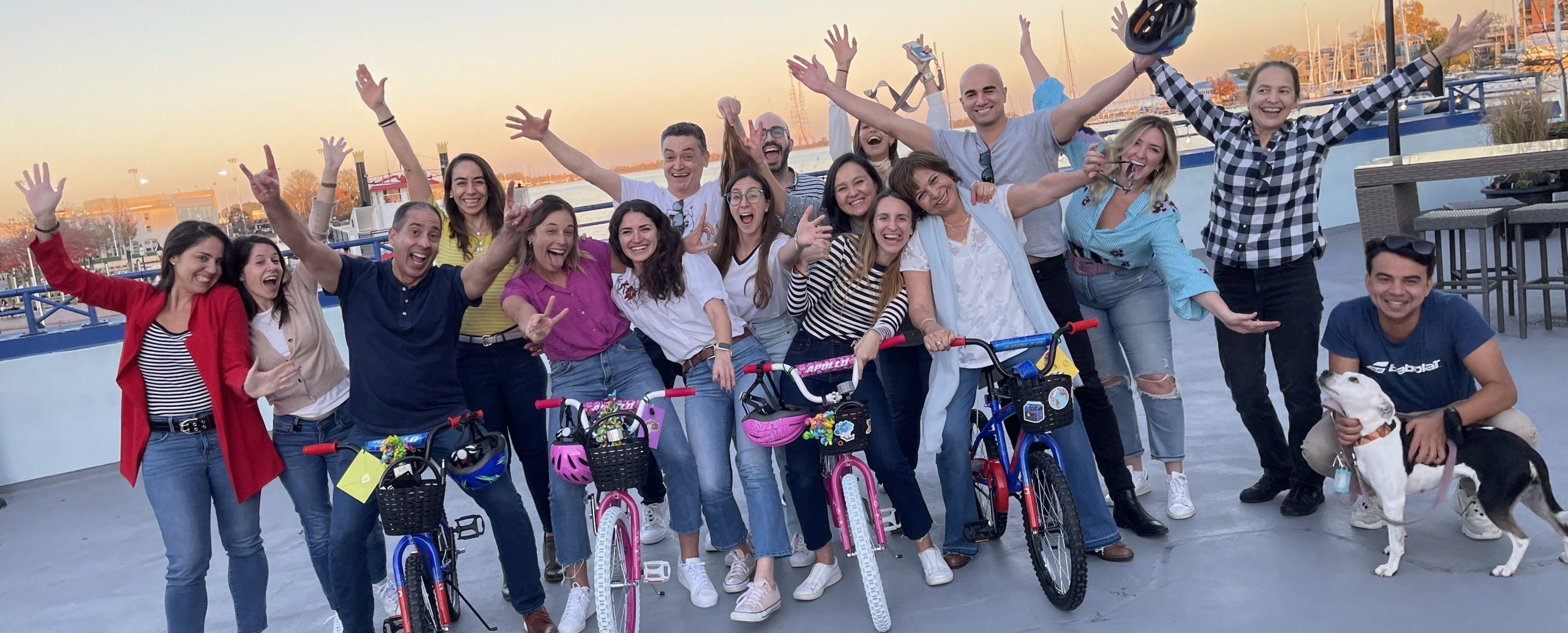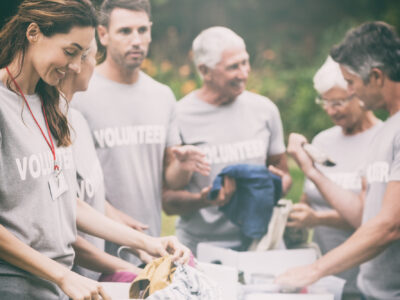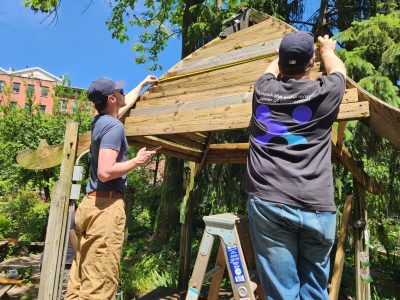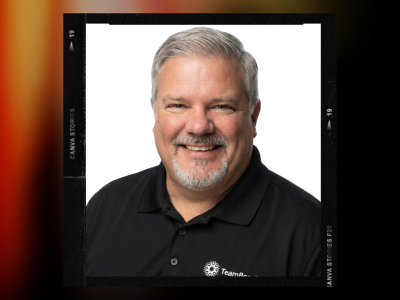STRONG TEAMS DON’T HAPPEN BY CHANCE 
How Storytelling Can Turn Tales into Potential
w/ Karen Eber
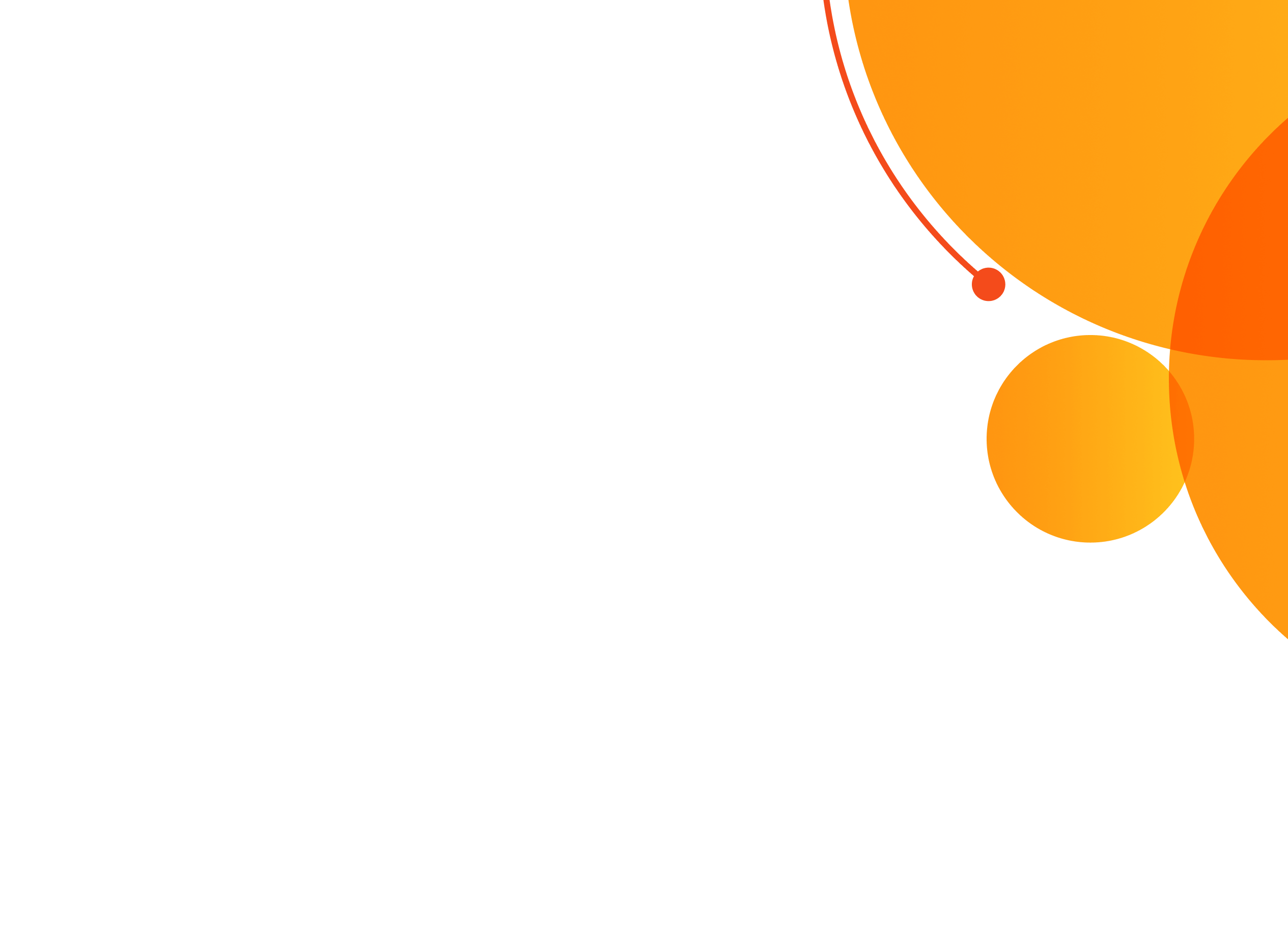
Use the buttons above to listen now.
Transcript - How Storytelling Can Turn Tales into Potential
Rich: On this episode of team building saves the world,
Karen: he went to the rivals of rivals, Red Sox fans and Yankee fans. And whether you’re a baseball fan or sports fan or not, you’re that uncle at the holiday table. That is like saying. The same story so much that like everyone around the table is mouthing the words because we’ve all heard this before.
Rich, can I, um, have you play along with me and ask you some questions you didn’t know about?
Rich: Hello team. It’s me, your old friend, Rich Rininsland host of team building saves the world, the show where I speak to thought leaders from around the world, discussing variable strategy. to help you and your team build a better work environment. And today, I should start by saying, once upon a time, as we discussed storytelling, with C Suite Leadership Development, Culture, and Storytelling Advisor, Karen Eber.
But first, I need to share some love with my supporters at Team Bonding. If your team is ready to experience teamwork with the power of play, then visit teambonding. com to learn more. Now, team, join me in welcoming my guest, author of the perfect story, Karen Eber. Karen! Hello to you. Hello. What a welcome.
Well, thank you. Thank you so much. Yeah. I trained a bunch of people just to sit at my desk and applaud
Karen: randomly. I love that. Who’s going to have a bad day when you have your, uh, an audience cheering you on?
Rich: Exactly. My thought as well. Karen, thanks again for coming on. Um, can I just start off like I usually do by asking you to explain to my team out there who you are and how is you gotten into this specific background?
Karen: I am a owner of a company called Eber leadership group that works with other companies on how they’re building their leaders, teams and culture 1 story at a time. So, I’m, I’m really trying to save the world from boring meetings by making people better communicators. I come from a corporate side. I sat on the other side of the desk for 20 years working as a head of culture and a chief learning officer and businesses like General Electric and Deloitte.
And then I’ve gone into opening my company so I can work with a bunch of different people and get them better at this. And I didn’t grow up wanting to be a storyteller. It was never my dream to help people do this. But as I’ve moved along in my career, I’ve done it more and more. I did a talk on Ted that took off and has been, um, wrecking up millions of views and that made me say, all right, let’s help people be better storytellers.
Rich: Why storytelling though? Why go this particular route? Cause it’s not something I would equate with the C suite and trying to get perfection in business.
Karen: This is the magic of storytelling because it is actually all about the brain and what’s happening when you’re listening to story versus information.
It’s just so much more dynamic. And the focus I take on trying to evolve the conversations, helping people understand what is going on in your head and why. Is the story going to be more interesting and memorable than reading off a chart of figures or a presentation that, um, we’ve all sat through. And more importantly, what do you do with that knowledge about what’s happening in the brain?
And what do you incorporate into your stories to make sure that they are memorable and engaging?
Rich: Well, what kind of things can you, uh, give someone to, I mean, because if you are just spewing out data, what would you say to someone who just wants to make that a little more thrilling, a little more exciting?
Karen: I often have to challenge their understanding around the data because so often people think, but it’s just so much faster to put up data. And so I will put up one of those Rorschach inkblots and I’ll ask people, what do you see? And if there’s 10 of us, there’s going to be 10 different opinions of what we see in it.
And that’s because part of what’s happening in our brain is it hates to have things incomplete, and it’s trying to figure it out. And so it’s interpreting visually was there, but my interpretation is going to be different from yours and the person next to us, because we all have different knowledge and experiences.
And the same exact thing happens when we put up a chart of data. We’re each doing our own Rorschach test of assuming what the data are and what it means. And so where I often have to start is challenging people’s belief that data speaks for itself, which it doesn’t. Data is a very specific type of storytelling that has you really think about first, what are you collecting the data for?
Like before you actually collect it, what do you want to use it to answer? Because. Most often we have way more data than we need, and we’ve never thought what we want to do with it. So we put it in a cool visualization tool like Tableau and we start tinkering with it, but we’re still not bringing meaning to it.
So starting to think about how do you want to use this? What questions do you want to answer? And then from there you can start to work a process.
Rich: But what started you down this road? What made you decide that storytelling was the avenue you wanted to take? Because I’ve interviewed a bunch of different people on this podcast alone who have all come up with different ways of teaching, you know, people to give good topic conversations.
Um, how do we even just talk to their employees or employers on a day to day basis? What made you decide storytelling was the method to take?
Karen: It was begrudgingly. I was drug into it. So when I was in these corporate roles at GE and Deloitte, I was trying to convince people that had budget for investment in technology or leadership programs that we needed to move forward.
But there were maybe 2 people that could say yes. And I was having to talk to 200 people, which meant 198 could say no. Okay. And would say no. Right. And I would go in and use stories to try to persuade them. And what I found is the story slowed the know it made the people that could have say could it would have did say no, um, start to be the ones persuading.
And so I was using this throughout my career to connect with people and get different outcomes. And as I was doing that, I kept getting, how are you doing that? How can I be a better storyteller? Because so many people do think it’s this really hard, elusive, soft skill. And I say, I did it begrudgingly because when my talk moved to ted.
com and it went viral, it became very clear that I should just focus my time and attention there to help people be memorable communicators.
Rich: Well, from your experience though, where are you getting your impact from? Like, how is this more impactful, uh, in communication than just a normal spreadsheet or, or an algorithm or what have you.
Karen: There’s a whole bunch of science, but we could start with the simple piece of is we’re listening to someone speak. There’s this little small part of our brain called Broca and Wernicke’s area that it’s the lexicon of translation. So words come in. We hear them. And our brain looks at our internal dictionary to say, do we know this word?
Okay. Yes, we got it comprehension. And when we don’t, we’re like, maybe we should look it up or maybe we’ll forget it. But it’s truly where it’s going. They’re processed into understanding and that’s it. About maybe the size of a walnut when you are telling a story, it starts to dynamically engage the entire brain as I’m talking about walking on the beach and I’m hearing the waves crash on shore.
And I, I can smell the coconut suntan lotion and taste the salt on my lips. My. Entire brain starts to become activated as I’m engaging senses and details. And so the first thing is from a real estate perspective alone, you use far more of the brain than just sharing information. Also, if I’m sharing information, more than half is forgotten in over an hour.
There’s no way to interact with it. That’s a lot of wasted time that we spend, whereas you make that more sticky when you are telling a story. But two other things I think make it really fascinating is one stories create this release of this, uh, this hormone oxytocin. So this is the bonding chemical that we experience when we feel.
Safe around someone when we trust someone so mothers and babies experience this in their bonding period after birth and as the infant is growing, but we can experience it when someone is telling a story and the active me telling you a story creates empathy and you towards me. Your brain is almost saying, like, oh, she trusts me enough to share this.
Right. And some empathy is formed. The more empathy that’s formed, the more oxytocin that’s released, the more oxytocin that’s released, the more your brain says this person feels safe to be around. So this is why you walk into a room and you feel safe going up to a total stranger and talking to them.
There’s a little bit of a connection happening and stories create an even stronger one. The third thing that I think is. Amazingly fascinating is that we do not make decisions based on data. We’d love to think that we make logically based decisions, but we really make them based on our emotions and our experiences.
Right? So, if you think about taking a photo on your phone that gets stamped with the date, location, F, stop all this information stored on there without you even doing anything. The same thing happens as you take an information through your senses. Some of them get stamped with emotions and experiences, and they get stored in your long term memory.
So when your brain is going to make a decision or take an action, it’s going through this library of files to say, What have we done in the past? What can we draw upon here? That is all happening at a subconscious level. Nice. There’s a ton of different experiments where they’ve seen that there’s a bunch of neurological activity indicating a choice or a decision before the person is even aware.
And the point they become aware is when logic comes in, which is why we buy the car. ’cause we lost the color, but we rationalize it ’cause of the gas mileage.
Rich: So it sounds to me you’re saying that this is more useful than just why you’re having a meeting with someone while you’re having Totally. While you’re standing in front of an entire crowd.
Karen: When you start to break it down, you realize like, yeah, there’s, this is going to be really powerful in the brain. That makes sense.
Rich: So, so far you’ve gone, if there’s a sales end to all this, is there an everyday use to all this?
Karen: Absolutely. If there’s an any use to it, it’s not limited to sales or nonprofit or, uh, giving a speech, you know, you can use the same approach if you’re giving a toast at a wedding or if you’re preparing for a job interview, it’s really when you are trying to have the person or audience you’re speaking to no think, feel, or do something different.
You can use a story that is going to connect with them in a different way and move them to a different place.
Rich: It’s it’s I love that you mentioned it because especially the empathy part because everybody has always talked about for the most part in the podcast here. Empathy is that one tool that can make not only the business world.
more engaging and a better place to go to every day without affecting burnout on yourself, but it is also the hardest tool to actually bring about in anyone.
Karen: So it’s a dynamic tool, though, there’s this interesting study that Adam Grant talks about in his book. Think again, where he was trying to see how can we get people to challenge deeply held beliefs.
And so he went to the rivals of rivals, Red Sox fans and Yankee fans, and whether you’re a baseball fan or sports fan or not, it doesn’t matter. picture anything with the rivalry, and he would ask them questions to describe each other and they would say things like they smell funny and they’re, you know, they have no intelligence.
And then he would ask them a series of, of questions and experiments to see where’s the point where you gain empathy for each other. And it wasn’t until they had the others imagine that. Child being born into a family and learning about baseball from their grandfather and how they got indoctrinated into that fandom and and recognizing, like, yeah, I guess if I was born in that old house, I would have been on the other side.
And it was really the story. It was the ability to. See a different situation. And while we might not agree with it because we’re, you know, a different side, we can then appreciate, Oh, I can see why that is the way it is. And now I have empathy towards it and different understanding, even though I would choose something different.
But what
Rich: about on a day to day? Like what kind of things can, I mean, I don’t want this to sound like a trick, but God knows there are people out there who maybe they’re more introverted than everybody else. And they’re afraid that they’re never going to. Be the one to, you know, get the next promotion, you know, only my work will carry me forward.
How is it that they can start building some of these techniques for themselves? Well,
Karen: 1st introverts are amazing storytellers and it’s not limited to introverts that introverts in particular have what I call the quiet advantage because you are as an introvert your office often noticing some things that other people don’t.
Because you’re observing a great deal. And so that makes you able to point out different connections and share different thinking and put a spotlight on things or celebrate different people. And so immediately, you are going to have this perspective and ideas that others don’t have. This is not a skill that is for the people that are very verbal.
I am an introvert. And that makes me a great storyteller, because 90% of storytelling is done individually and thinking about what am I trying to do? Why? Where am I trying to get the audience to? And where are they today? What might be an obstacle and then creating your story, crafting it to think about how you’re moving them forward.
And so the telling is maybe 10% of it, but 90% of it. Is really thinking about what am I trying to do and how do I put this together? And, and how do I refine it? So it’s the most impactful.
Rich: Okay. Well, what are some of the pitfalls that this newly emerged storyteller might actually face?
Karen: There’s a couple of mistakes that are frequent that are common rather one is that we tell the stories we love to tell, but not the story of the audience wants to hear.
Okay. So, storytelling starts with your audience and not with the story as much as we fall in love with the story that we hear and we want to share it. It has to be in service of the audience and what you’re trying to do. Otherwise, you’re that uncle at the holiday table. That is like. Seeing the same story so much that like everyone around the table is mouthing the words because we’ve all heard this before.
And so when you start with your audience, you can then think about how to shape the story to get there. When you start with the story, you’re often telling the story you want and it can fall flat and we’ve all sat on the in meetings and in situations where someone was telling a story because they wanted to.
So that’s problem one. Problem 2 is that we often don’t leave ourselves enough time to prepare the story. So you can go tell a story in the moment. Absolutely. But I feel like the higher the stake. So, in a conversation with people, tell it a moment, experiment with that. But if you were going to plan to open a meeting with the story, you would want to put a little more practice in it.
And what I find is that so often people spend 3 hours, like perfecting their PowerPoint presentation and lining everything up and thinking, like, maybe 5 minutes about what they want to say and. We need to flip that a little bit. We need to think about what is it that we want to say? How do we work on the story and make sure we’ve left ourselves enough time because you often need a couple passes.
And so putting the story together, taking a break, even if it’s 5 minutes and coming back with a new perspective can make such a big difference. Even the benefit of a day, I say, the higher the stakes, the earlier out, you need to start to make sure the story is working the way you want. And so that’s another 1.
I think that is just, you know, time and business and life happens and we fall into that. But the more you can give yourself more time, you can give yourself the better the story.
Rich: Is brevity the soul of wit in your opinion, though, is this could this be a less is more or,
Karen: or yeah, it’s a question because people always say, how do I tell a succinct story?
Right? And what they’re really saying is, how do I tell a meaningful story? We have this fear that I have. You know, 30 seconds to tell a story when I open this meeting. Otherwise, the leader’s going to cut me off. And maybe that’s true, but they’re cutting you off because it’s not compelling. And you haven’t put together a story that has a structure that people can follow.
And so what I always argue is step one is build a story that has structure. That’s, that’s gonna, um, have people follow it. Do you think of comedians? It’s like 14 minute jokes. And you were there every step of the way. Where’s he going to go? We’re not going to be telling 14 minute stories, but when it’s structured, well, you earn permission often nonverbal, silent permission to keep going.
So it’s to me less about how do I tell a short story? And how do I tell focus on? How do I tell a meaningful story? Once you get the meaningful story, you can figure out what is a small, medium and large version of this because stories will expand and contract based on what you have and how you. Can make it
Rich: engaging, Karen.
I want to keep talking about this, but as you keep mentioning 14 minutes, Anna is buzzing in my ear, telling me that we’re at that point where I need to step away for a second. So give me just a brief moment here where I can step away and tell the story of a company. I am very proud to be a part of team bonding.
Team bonding was founded over 20 years ago with one simple question. How can employees have a great time while fostering strong, authentic bonds between people who work together? No matter where your company is located, Team Bonding offers powerful, engaging, custom team building events designed to get the best out of your team anywhere in the world.
They’ve created a catalogue of innovative events using the power of play as a learning tool and tapping into the correlation of work and play. So whether it’s scavenger hunt to jeopardy or so much more, the team bonding of activities, be they live virtual or hybrid maximizes the impact of team building with an accent on fun.
So visit teambonding. com to schedule your event. Now team bonding. When you want seriously fun results, and we are back with Karen, we’re still talking about storytelling, Karen, I’m loving this. Let’s get right into it because we’ve been talking about what it can do. How can they do it? I mean, I don’t want to take away your business model.
I don’t want you to give away the story here, but give us some hints, give us some tactics that people can start using right now after listening to this podcast. Yeah,
Karen: let’s let’s focus on 2 things to get started. First is I mentioned story starts with the audience. So let me give you a few questions that you can ask yourself anytime you’re thinking about telling a story to get really clear on who you’re going to be talking to.
So 1st thing you do want to ask yourself is what is it that I want them to know, think, feel or do after they hear this story and write a sentence for it. Get really clear on what outcome you want. The 2nd thing is, uh, where are they today? What is their current mindset today? So you can think about where am I moving them from?
What can I connect to? That’s familiar to them. And then the 3rd is what might be an obstacle. So, if I’m trying to persuade someone to a different belief, is there anything that I know of that might be an obstacle that I can challenge in my story? So, in a matter of moments. And this works for communicating, too.
This could be in five minutes before the meeting starts. This could be in your car on the way to an interaction. You’re considering, what do I want them to know, think, feel, or do? Where are they today? And what might be an obstacle that gets you really grounded in what you’re trying to get them to. If you skip that step, you don’t know if you’re going to stick the landing.
So that’s an easy place to start. The next place I would love to go is the question I get really often of where can I find ideas for stories? Because that feels really overwhelming. So, Rich, can I have you play along with me and ask you some questions you didn’t know about? Absolutely. Can you tell us about your childhood?
Rich: Uh, well, we only have like another 20 minutes left of this show Uh, yes, I grew up. I was born in philadelphia, pennsylvania Uh, I’m the youngest child of a family of four. I was moved to southern New Jersey at an early, early age. So much so, I don’t remember growing up in Philly at all. Yeah, we were a suburban white family from that point forward.
You know, full of our own trials and travails.
Karen: Love it. Love it. Thank you. Rich. And it’s a very vague question that I asked you. So thank you for even answering it because sometimes that’s really hard and that was intentional. Okay. My next question for you is what sound or smell remind you of home?
Rich: Oh goodness.
Um, the ocean being, being in South Jersey every summer was multiple trips to the beach.
Karen: Yeah, okay. So what I did there was I demonstrated what happens when we’re trying to figure out what story to tell, because when there’s no constraints or parameters, it’s like, tell me about your childhood. Well, where do you want me to focus?
Like, early childhood, late childhood? And most people respond very similar to what you did. I grew up in this location and here’s the type of home that we had. Maybe how many relatives or siblings around, but that’s it because it’s so broad. I don’t know where to access in my brain, but if we constrain it like we did and now you’ve talked about the ocean, we can dig and easily come up with 10 stories of memories and things that are familiar to you.
And that’s where stories come from. When you put constraints in place, if you’re having a hard time coming up with an idea, it’s because It’s too broad an area. But if I had you start digging into, um, professional experiences and like all the questions you get asked in a job interview of a time you failed a funny project, something you’re really proud of, like there’s endless ideas and it’s not limited to your professional experiences.
You can share stories about your personal experiences, the vacation adventure that went awry. Maybe you love visiting museums and there’s something that you saw in one that you really connected with, or you’re listening to a podcast that struck with you, or, you know, you see a clip or something that really speaks to you.
What you want to do is build a list of these ideas because that becomes your toolkit and you want to do it before you ever need to tell a story. Because I mentioned the challenge is we don’t leave ourselves enough time when you are backed up against a deadline of telling a story, you’re stressed and it’s harder to think and be creative.
When you have a list of ideas, magic happens because you’re going to start scanning that list of ideas and you may use none of them, but it will prompt new thinking and new ideas. And so those are two really easy places to get started of when you have an opportunity to tell a story, get grounded with your audience.
And start this list of ideas where it’s things that you have energy and excitement for that create a list of potential topics that you can go to any time you’re telling a story. But what
Rich: about those people for whom storytelling just seems to be so hard, like they can see people do it. And yes, they think that they have their own stories as well to tell.
But when it comes to even especially moving this into the business world, uh, how, basically, how do we debunk the myth of storytelling as way too difficult?
Karen: I find that the people that feel like it’s too hard do tell stories in their personal lives, but it feels less higher stakes because when you’re sitting at a dinner table with friends, you’re not feeling as self conscious and you’re laughing and the outcome is usually laughter or something amusing.
And when it goes to business, all of a sudden, all these biases we have about how we should show up and communicate and what we should do just get thrown away. And then we think, well, I’m not good at this. And of course, until you realize there are steps, just like anything, there are steps you can take to build and work a story, then that makes a difference.
It’s going to not only give you confidence that you are following things that are meaningful, it’s going to give you a story that has good structure and is helpful. So. If you feel like you can’t tell stories, what I would say is yet because you’re doing it and it’s how you can start to apply these things to get grounded on your audience, choose an idea, and then start to put together a basic structure that gives you a story to tell
Rich: you mentioned what story your culture tells.
Karen: Every organizational culture tells a story and really it’s at a much smaller level because culture is talked about so frequently, even more so now, as companies are making shifts past the pandemic and deciding where people are working and how they’re working and the thought sometimes is culture is what the CEO says, and the values that hang in the lobby and all those things.
Rich: Those are the days I remember. Yeah,
Karen: that’s true. Yeah, but really the culture is what happens in interactions and what behaviors are encouraged or discouraged. So, if there’s a team member that interrupts all the time and no one ever addresses it, no one ever asked them to stop, that then makes that behavior acceptable and that becomes the culture.
And so, culture is the worst behavior you’re willing to tolerate and every culture tells a story. So, I love to give the example of if you picture. University. So just say Harvard that most people are familiar with globally. Um, there’s a vibe you picture something with Harvard. For me, I picture Ivy and bricks and, you know, Ivy league, but within Harvard in the different colleges, there’s a very different experience.
So the college of engineering is really different than the college of physics, which is really different than the college of literature. And so Culture is really at that day to day level on projects on teams as it is in Harvard. There’s the shared Harvard culture, but the day to day experience is going to be very different in the College of Literature than it is in the College of Engineering within a company.
The HR. Function is really different than finance, and they each have a different vibe and different behaviors that are accepted. And so every culture tells a story of what are we encouraging or discouraging? And how do we shape that to be a place that people can work and enjoy what they’re doing
Rich: getting a little more specific though?
Because when you talk about culture, You can also talk about diversity. So goodness knows being, uh, an organization that has a multitude of diversity throughout it, how do we make sure when we’re telling our stories that we’re not insulting one culture that we didn’t mean to that, but not knowing enough about that audience.
To actually be able to connect with them. So essentially what I’m asking is how can storytelling help to solve the problem of diverse or the problems with diversity in the, in the business world?
Karen: Yeah, it can help and it can help and hurt. So it can help because you’re going to be creating empathy for someone’s experiences that might be different than your own or that you were feeling.
And you didn’t know that other people are experiencing and it gives a sense of community. You know, you look at things like eco anxiety is something that people are very concerned and it is growing. The concern is growing among. And more broadly, and what they find is when they gather people in storytelling situations, they create this empathy and this experience and this feeling of like, oh, we’re not alone.
Something similar can be happening inside companies where you’re creating community and understanding and appreciation for. Lived and worked experiences that are different than yours. The negative is that if you aren’t thoughtful about how you’re putting your story together, you are putting a spotlight on one population and potentially neglecting another or putting your own perspective that is missing others.
And so taking the care to think about what am I trying to do? And, and am I amplifying the voices that I need to be amplifying?
Rich: So how can we make sure that we’re doing it? What kind of things can we watch for? Because part of talking to an audience is getting to learn the reactions of the audience while you’re talking to them.
So what kind of things can we see just to sort of help avoid the pitfalls as we go?
Karen: I would say to just finish the thought on things like diversity, the key there is not to have just 1 person sharing the stories, right? The more different stories and perspective shared, the more diverse thinking that is there.
And so that’s always going to be helpful in making sure there’s a place and an invitation to hear from a variety of people when you’re telling stories. physical reaction. So, a few times today, you’ve laughed as I’ve shared stuff that always delights me. That’s always a amazing thing. Um, if your audience doesn’t laugh or smile or lean forward, it doesn’t mean your story is bad because sometimes a story can prompt thinking in the audience and they’re going to go off about their story and the thought that you triggered.
And that’s a good thing too. And so you can generally. the difference between you’ve prompted thinking for someone and they’ve disengaged and they’re just leaning back and they’re daydreaming about their grocery list. And so you can see in body language, even on zoom, you can, or on a web based platform, you can often see the disengaged versus Oh, that’s interesting.
That makes me think of this, which is what you want to do. Occasionally you get, you know, the room is too cold and I’m hungry and it’s a little hard to read because we all are going to have those moments. But most often you see enthusiasm either in the non verbals or what people share back to you.
Rich: It’s part of what drives me nuts on zoom.
When people keep their cameras off, like I can’t even tell if you’re enjoying what’s happening. So this is good because this is this, not only are we talking about the storyteller, we’re talking about the audience now. How do I actually be an active audience member as well? That could be a whole other episode.
I might call you back for it, Karen, if you don’t mind. I would love it. Speaking of which is this, is all this covered in the perfect story, your book?
Karen: It is. So the perfect story comes from the last line of my Ted talk, which is, don’t wait for the perfect story. Take your stories and make them perfect because people always think like, well, the perfect story I need to tell.
It doesn’t, it must be like on a shelf that I can pull off and it’s ready. Like it doesn’t work that way. Stories become perfect because of what you put into them. And so the book takes you through the process of how do you understand the science? How do you understand what’s going on in the brain? And more importantly, what do you put in your stories to leverage it?
And then it takes you methodically through finding ideas. Preparing for your audience, developing that story, engaging the brain, um, telling stories with data all the way through, making sure you don’t manipulate and how you navigate the vulnerability of storytelling. And my favorite part is at the end of each chapter, these fun little interview vignettes with people that tell stories in different settings.
So there’s a former creative director at Pixar, an executive producer of the moth, the. The co founder of Sundance, a physician, people that do this in vastly different ways. And so you get to live in their world for, you know, 500 words or less to see how they approach storytelling and see there’s so many different ways to do this.
Rich: What about team building? Focusing a little bit more on my end, if you don’t mind, how is it that storytelling actually can build up a team or bring a team?
Karen: It’s huge. People have experienced this already in informal ways when there’s an offsite or a retreat. And when you’re getting coffee or tea or over dinner, you learn more about someone.
And maybe it’s that person that really annoyed you and got on your last. nerve. And then you come away thinking, you know, they’re not that bad. What was happening was the empathy and the oxytocin as you shared a little bit about yourselves and your lives that naturally that conversation that naturally comes up.
So you can lean on that even more intentionally and I’ve, I designed and facilitate a lot of offsites and this is always a piece of it of how are you giving people the chance to learn more about each other, gain empathy for different situations, take the toughest pieces of conflict on the team and unpack that and use stories to get different understanding and shift to some different outcomes.
Um, it’s also great for visioning and where do we think, what would this look like a year from now? What are our clients or customers saying about us? What are we saying about us? And so. It’s a really nice way to gain understanding, work through conflict, increase trust, and get to strengthened outcomes.
Rich: Plus, uh, from my own understanding, every shared experience is a shared story.
Karen: Because that becomes, remember that offsite meeting we had, do you remember that thing? I can think of a team that they hadn’t experienced 20 years ago and the people sit around and laugh about it the same way they sit around and laugh about events from college that they had.
It’s, you know, these are all bonding moments and stories can help facilitate that. Okay.
Rich: As a corporate manager, let’s step into those shoes for a second. How is it that I can help my team to better build this skill for themselves?
Karen: When you share stories, they’re going to have increased trust in you because it is almost this signal to the brain that is, oh, this person trusts us enough to share this.
Now, stories don’t have to be like, your most intimate private experience. I always say. That personal doesn’t mean private stories are always personal because it’s why you are telling it. Even if you’re telling someone else’s story, you are bringing your personal perspective and your reason for telling it.
So they’re always personal, but that doesn’t mean you’re sharing something really private. And so I find leaders often say, but I don’t want to talk about my family. I don’t want to talk about. You don’t have to, but when you do share a story, you start to get this response. Um, if you create this habit of sharing stories about mistakes and lessons learned, you’re starting to create psychological safety on the team and say, it’s okay for us to talk about these things.
Not only is it okay, it’s important. So we can learn from each other and understand. But as the leader, you need to lead that. Otherwise it is incredibly vulnerable for someone to be like, yeah, let me tell you about this mistake I just made in front of all of these people. So it can create the culture that you want on your team.
It can increase trust and have your team members have more trust in you and you can help shift them to a different place. The other thing is that stories lower defensiveness. So, when I’m working with teams where there’s a lot of conflict or there’s a problem, I will often tell a story that another organization has experienced.
And once they recognize, oh, this isn’t just us making mistakes, like other people struggle with this too, the defensiveness comes down and then they’re able to really have a discussion about why is this happening and what do we want to do different? And so it’s a tool that can help create shifts in so many ways.
Rich: Can it be as simple as just walking up to an employee or someone who happens to be under me in the, in the stratus of the organization and simply saying, how was your weekend?
Karen: Yup. I worked with a leader who was stiff and awkward. Very stiff and awkward and someone pulled him aside at 1 point wasn’t me.
Someone pulled him aside and said, you know, you would do better to start with, like, maybe a little anecdote from your weekend because he was coming and prepared with his agenda and he would jump right in. But everyone was just like, it’s so stiff. You feel like, you know, you’re on your best behavior and he started to come in and say, oh, my wife and I tried this restaurant this weekend and very short thing.
You know, And then he would kick off the agenda. Huge difference because he was now relatable. He was human. He didn’t jump right in. He created this, um, almost like releasing of the pressure in the room where the energy changed. And so it doesn’t have to be elaborate. And this is. Case, the whole outcome that he wanted was to be more human.
And so that’s what the story did. And it made a big difference. And so it became a little formulaic of it was like, okay, we know he’s going to start with this story and then he’s going to go, but you noticed a difference when he started with the story and when he didn’t.
Rich: Now, going higher up the ladder in this increasingly hypothetical corporation that we have, let’s look at the higher ups.
How is it that encouraging this can actually bring about, you know, a wider target audience for us? And, and building stronger relationships.
Karen: I think that stories create a leadership tale. So I worked with a company where the CEO of the organization, every two, three weeks would write a short story based on something he learned from a client and interaction feedback he got a mistake.
And it would be like a simple paragraph of here’s what happened. And then here’s what he took away and he would send them out. And then, unbeknownst to him, teams started pulling them up and talking about them. And when have we encountered something like this? And what might we do? And what is our version of this?
And it creates this leadership tale of the conversation that happens when you’re not around. The reinforcing of the desired behaviors that we want. What he was really doing was building leaders and building culture by this simple thing. And on teams, it created this sharing of their own stories. And so, it’s a way to Have people experience things and think about what it means to them when they may never have had that experience before.
That makes them so much more prepared for when they encounter something similar. It creates this environment that shows what is encouraged or discouraged. It’s what’s repeated in discussion. It is far more engaging, memorable, impactful than you coming out and saying, here’s our strategy and our values.
It’s showing what that experience is. And so it really extends your leadership and is a, um, important tool to incorporate.
Rich: Karen, I could keep talking about this forever, but unfortunately we do have a limited amount of time. Did you have fun being here today? Absolutely. Will this now be a part of your story moving forward?
Fantastic. My team out there, please. One more time. Put your hands together for Karen Eber and Karen, can you tell my team where they can find you, where they can find your book and how they can learn more about this
Karen: important topic? Now, easiest place is my website, which is my name, K A R E N E B E R dot com.
The book is there along with some giveaways with the book. Um, all of my social is there. Even the ones that keep changing their logos, you can find me and connect with me
Rich: there. Let’s dig in a little deeper before we go, because I want to learn more about you. In my speed round,
speed round. As I had started to describe to you before we came on the show, this is just 60 seconds. I’m going to play some music, that just keeps me in mind of where we are in the time. While I’m doing that, I’m going to ask you a series of completely innocuous questions, very simple answers. You don’t have to get into the full storytelling aspect of it unless you want to.
That is entirely up to you. But if you’re feeling at all competitive, because that’s how this game was originally designed. We are now at 15 questions asked in 60 seconds, ask them. All right. So if you’re ready to have some fun, let’s, let’s begin. What’s your name? Karen neighbor. How many kids do you have?
Zero.
Karen: How many pets? Two.
Rich: If you could ask your pet a question and get an answer, what would it be?
Karen: Why do you wake me up in the middle of the
Rich: night? What’s your favorite? It. Children’s book
Karen: The Mischievians by, uh, Joyce Williams. William Joyce.
Rich: Nice. If you could be any cartoon character, which one
Karen: would you be?
Felix the
Rich: cat. Excellent. Favorite ice cream flavor? Vanilla. Would you rather live in the past or the
Karen: future? Um, the future. What’s your most
Rich: embarrassing childhood memory?
Karen: Uh, I broke my arm when I was 11 years old by skating into a wall. ,
Rich: what’s your best childhood memory?
Karen: Getting my cast off.
Rich: Favorite holiday?
Karen: Thanksgiving.
Rich: If you could eat one food for the rest of your life, what would it be? Pizza. And if you could talk to anyone from history, who would you like to talk to? Robin Williams. Oh, that’s good answer! Such a
Karen: good answer! I tried to do a conversation through chat GPT and it’s failed miserably. Chat GPT
Rich: does nothing but fail.
I keep telling people this.
Karen: It’s all the prompts but at some point, it’s gonna happen.
Rich: All right, Karen, 13 really great job. No
Karen: 13
Rich: was fantastic. I loved it. Karen, once again, thank you so much for coming and joining us with this meant the world week. We could have you back at any time and just continue this conversation because we could even talk about chat GPT and technology and everything that goes on behind it, but we don’t have time.
Thank you. Thank you so much. And thank you my team out there. That’s it. We’ve wrapped up yet another episode of team building saves the world. If you’ve enjoyed this episode as much as I have, whether you’re new to the podcast or an old fan of the show, please be sure to share it with everyone. You know, whether they’re a coworker, friend, or family member, it just helps us to share all this vital information.
You can find out all about us, including all past episodes at teambonding. com slash podcast. You can also find this wherever you find your favorite podcast, Google podcast, Apple podcast, Spotify, wherever you go to listen, my friends. We will be there. And don’t forget to look for us on all the social medias at team bond podcast.
Leave me a message telling me whether or not you like the show, or if you have an idea for future episodes, we want to hear from you. So before we say our farewells for this episode of team building saves the world. Please never forget my friends. If you are within the sound of my voice, you’re on my team now, and I am forever going to be on yours.
So long team.
Karen: I’ll see you next time.
It’s been said that you learn more about a person in an hour of play than in a year of conversation. So why not put your co workers to play with the help of the team at Team Bonding. Team Bonding was founded over 20 years ago with one simple question. How can employees have a great time while fostering strong relationships?
Authentic bonds between people who work together. Their catalog of innovative events includes
Rich: scavenger hunts, Jeopardy,
Karen: and much more. Each activity, whether live, virtual, or hybrid, maximizes the impact of team building with an accent on fun. Visit teambonding. Team bonding, when you want seriously fun
Rich: results.
August 29, 2023
In this episode of Team Building Saves the World, we explored how storytelling can be a way to engage, motivate, and inspire productivity in employees, leaders, and companies with expert Karen Eber. Rich and Karen discuss the importance of storytelling in building a sense of purpose and psychological safety, fostering communication, reinforcing company values, and helping to create a positive workplace culture.
Listen to learn how storytelling can be a powerful tool for creating a more connected, engaged, and productive workplace.
About Karen Eber:
 Karen Eber is an author, international consultant, and keynote speaker. Her TED Talk on what happens in the brain when you listen to stories continues to inspire millions. Karen is publishing “The Perfect Story: How to Tell Stories That Inform, Influence, and Inspire,” with HarperCollins, on October 3, 2023.
Karen Eber is an author, international consultant, and keynote speaker. Her TED Talk on what happens in the brain when you listen to stories continues to inspire millions. Karen is publishing “The Perfect Story: How to Tell Stories That Inform, Influence, and Inspire,” with HarperCollins, on October 3, 2023.
As the CEO and Chief Storyteller of Eber Leadership Group, Karen helps companies build leaders, teams and culture one story at a time. She works with Fortune 500 companies including General Electric, Kraft Heinz, Microsoft, Kate Spade, and PwC. She guest lectures at MIT, London Business School, and Stanford and is a frequent contributor to publications like Fast Company, Business Insider, and Thrive Global.
With 20+ years of experience, Karen has been a Head of Culture, Chief Learning Officer, and Head of Leadership Development at GE and Deloitte. She is a four-time American Training and Development winner.
Learn more about the power of storytelling in our blog!
And some empathy is formed. The more empathy that's formed, the more oxytocin that's released, the more oxytocin that's released, the more your brain says this person feels safe to be around. So this is why you walk into a room and you feel safe going up to a total stranger and talking to them.
Karen Eber
More great podcast episodes.
Season 6 | Episode 18
That’s a Wrap!
Season 6 | Episode 17
Work-Life Integration
Season 6 | Episode 16
Laughing it Off
Season 6 | Episode 15
Corporate Volunteerism in Action
Season 6 | Episode 14
Collaborative Play at Work
Season 6 | Episode 13
The Science of Supportive Workplaces
Season 6 | Episode 12
The Power of Being Present
Season 6 | Episode 11
The Age Advantage
